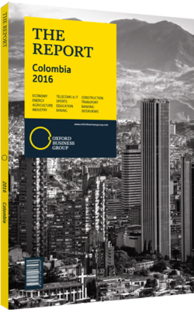Luis Carlos Sarmiento Gutiérrez, CEO, Grupo Aval: Interview

Interview: Luis Carlos Sarmiento Gutiérrez
How will the new tax reform and the financial transactions tax affect the banking sector?
LUIS CARLOS SARMIENTO GUTIÉRREZ: The tax reform, passed in December 2014, encompassed a tax on financial transactions, an equity tax and an increase in income tax. The first two were just extensions of existing taxes that were supposed to cease starting in 2015. The third – the income tax – is new and will impact profitability.
The tax payable on financial transactions will now remain until 2018. Its impact is no graver than the impact it has had during the past decade since it was first levied. Colombians have lived with this tax for many years now, and we do not believe that its continuity will have a negative impact on loan growth, as it was already included in our projections. If, on the contrary, the tax had faded away, we could have expected an increase in the number of transactions conducted by our clients and a further boost in the banking system’s penetration rate, growth and profitability.
The second is the wealth tax, which started January 1, 2015, and is payable on the net equity of companies and individuals. This wealth tax totals 2.55% and is payable in three instalments as follows: 2015 (1.15%), 2016 (1.00%) and 2017 (0.40%). This tax existed previously, and we believe it had a direct impact on the commercial loan growth portfolios. Companies decelerated the growth in their operations in order to optimise their balance sheet structure – used to calculate their net worth tax. As the base for the equity tax has already been set, we do not foresee the wealth tax having an additional impact on the growth of our corporate book. The third tax is a surtax that has increased the income tax rate from 34% in 2014 to 39% in 2015.
The surtax will further increase to 40% in 2016, 42% in 2017 and 43% in 2018. How can organic growth of banks be encouraged?
SARMIENTO: Banking penetration remains low when compared to other economies, both in Latin America and in developed countries. The pace at which banking penetration has increased in recent years – about 200 basis points per year in the ratio of gross loans to GDP – is healthy. At this pace and at least until 2020, both banks and regulators are fairly certain that growth will not sacrifice quality with respect to the financial system’s loan portfolio. The financial system will continue to grow at a multiple between one and two times GDP growth for the next five years. By 2020 we will need to reassess where fundamentals – such as unemployment, formalisation of labour, GDP per capita and total indebtedness per family – stand in order to see if the 200 basis points per year growth rate is healthy.
To what extent is the banking sector helping to fund the state’s infrastructure requirements?
SARMIENTO: The Colombian banking sector will be a key player in providing funding for 4G infrastructure projects. As those contractors that have already been awarded concessions begin to actively seek financing, the financial system will be ready to put its balance sheet at their service. It is a matter of agreeing upon fair rates, given the risk profiles of each project. The most important factor is that the local financial system is able to absorb the majority of funding required by builders.
How can Colombia keep developing its banking strengths to compete in this competitive region?
SARMIENTO: The Colombian financial system will improve its competitive position over regional peers thanks to the stringent, but pro-market, regulations of our superintendence. These regulations will strengthen capital and manage the quality of loan portfolios. In addition, the effectiveness of the Colombian central bank’s intervention, via interest rates, and the government efforts to increase banking penetration rates, are increasing market depth.
You have reached the limit of premium articles you can view for free.
Choose from the options below to purchase print or digital editions of our Reports. You can also purchase a website subscription giving you unlimited access to all of our Reports online for 12 months.
If you have already purchased this Report or have a website subscription, please login to continue.

